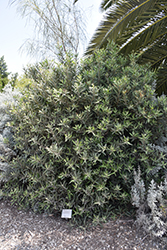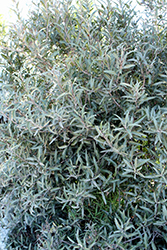It's all about ...
plants

Height: 15 feet
Spread: 10 feet
Sunlight:
![]()
![]()
Hardiness Zone: 8b
Description:
A slow growing, upright, low branched evergreen shrub or small tree with dark green, leathery foliage; tiny white flowers in dense clusters appear in spring, followed by very persistent tan fruit; prune only lightly to shape; perfect as a large screen
Ornamental Features
Arizona Rosewood has masses of beautiful white flat-top flowers with buttery yellow eyes at the ends of the branches from mid to late spring, which are most effective when planted in groupings. It has dark green foliage with pointy white spines and tinges of silver. The pointy leaves remain dark green throughout the winter. It produces tan capsules with coppery-bronze hints from mid summer to mid winter. The smooth gray bark and dark red branches add an interesting dimension to the landscape.
Landscape Attributes
Arizona Rosewood is a dense multi-stemmed evergreen shrub with an upright spreading habit of growth. Its average texture blends into the landscape, but can be balanced by one or two finer or coarser trees or shrubs for an effective composition.
This is a relatively low maintenance shrub, and should only be pruned after flowering to avoid removing any of the current season's flowers. It is a good choice for attracting bees and butterflies to your yard. Gardeners should be aware of the following characteristic(s) that may warrant special consideration;
- Insects
Arizona Rosewood is recommended for the following landscape applications;
- Mass Planting
- Hedges/Screening
Planting & Growing
Arizona Rosewood will grow to be about 15 feet tall at maturity, with a spread of 10 feet. It has a low canopy, and is suitable for planting under power lines. It grows at a slow rate, and under ideal conditions can be expected to live for approximately 30 years.
This shrub does best in full sun to partial shade. It prefers dry to average moisture levels with very well-drained soil, and will often die in standing water. It is considered to be drought-tolerant, and thus makes an ideal choice for xeriscaping or the moisture-conserving landscape. This plant will benefit from an application of bonemeal and/or mycorrhizal fertilizer at the time of planting. It is not particular as to soil pH, but grows best in sandy soils. It is somewhat tolerant of urban pollution. This species is native to parts of North America.
This plant is not reliably hardy in our region, and certain restrictions may apply; contact the store for more information.

